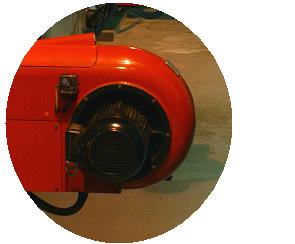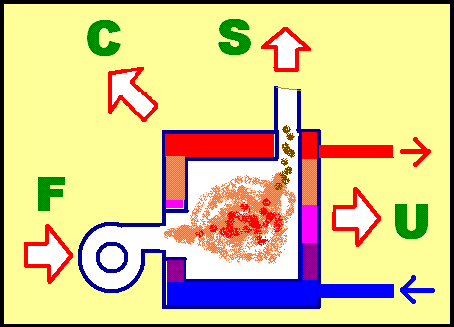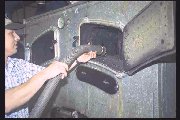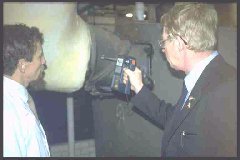
The principles can be illustrated by reference to a piece of energy conversion equipment that almost every reader will have responsibility for – a heating boiler. Most of the heat released from the fuel is absorbed by the water in the boiler, but some escapes in the exhaust gases. Some heat is also lost from the casing of the boiler. Figure 1 shows the energy balance: energy arrives in the fuel at F units per hour; heat is lost up the stack at S units per hour; and heat is lost from the casing at C units per hour. The difference, F-S-C, leaves the system as useful energy (U units per hour).
The stack loss S is a certain percentage of the fuel input F, and the ratio (F-S)/F is called the ‘combustion efficiency’. S can never be zero because the exhaust gases have to be maintained above a certain temperature to ensure that the chimney works effectively and to prevent corrosive condensation (condensing boilers are an exception – see below). How high or low the actual efficiency is depends on various factors that affect S, including how well the burner is tuned. Excessively-high exhaust temperature will increase losses because of the exhaust gases carrying more energy away. Excessive exhaust-gas volumes will also waste energy (even if the temperature is OK) and this will occur if the fuel:air ratio is too “lean” – that is to say, if more air is fed in than is necessary for complete combustion. Conversely if too little air is supplied for complete combustion, some unburned fuel will escape up the chimney (as smoke, soot or carbon monoxide depending on the fuel). Damaged burners can cause incomplete combustion even with considerable excess air.
Different burners can achieve different efficiencies, but a figure of about 80% - 85% would be typical in a heating boiler. The burner in a condensing boiler can achieve close to 100% because the exhaust gas is discharged at low temperature and latent heat is recovered from the water vapour, in the exhaust. By contrast, a burner on a high-temperature furnace would usually be much less efficient because of the high temperature at which heat is exhausted up the chimney.
Correct adjustment of air:fuel ratio, combined with measures to minimise the exhaust temperature (like keeping the boiler internals clean, Figure 2) will between them ensure that the maximum useful heat is extracted from the fuel. This could yield a saving of several percent on boiler fuel, depending on how bad the situation is to start with - perhaps of the order of 20-30% in the worst cases. Moreover, these savings could be achieved at little or no cost since combustion testing and adjustment of burners ought to be part of good routine maintenance. Every boiler maintenance visit should include a combustion test, which can be done by sampling the exhaust gases (figure 3) and its results should be reported.
Combustion efficiency can be tested (see typical kit) by taking the following measurements:
- Stack temperature
- Ambient temperature
- Percent of either oxygen or carbon dioxide in the exhaust gas
- Carbon monoxide level (for gas) or smoke number (for oil)
If you don't do the tests yourself, you should check that the reported percentage combustion efficiency is consistent with the recorded 'raw' measurements. An on-line calculator is available that can help you do this. It is based on something I did when I was energy manager for a large organisation, and had checked through a batch of test reports from our boiler maintenance contractor to find about half of them somewhat suspect. I went out and did some spot checks with my own equipment, and stumbled over evidence of falsification: in some cases, previous test results were chalked up on the boiler, obviously with the intention of saving the technician the bother or doing a real test next time around. But the most susprising evidence of cheating was that flue-gas tests has been reported on some installations where there wasn't a probe hole in the boiler flue.
In summary: poor maintenance of burner equipment will cause avoidable losses. Minimising costs is just a question of getting the maintenance right: and that will only happen if you monitor performance and insist that things are done as they should be.

Figure 1: the boiler energy balance

Figure 2: cleaning the boiler

Figure 3: sampling the flue gas
see why.
For burner suppliers and related training, conferences &c., visit the Combustion Engineering Association